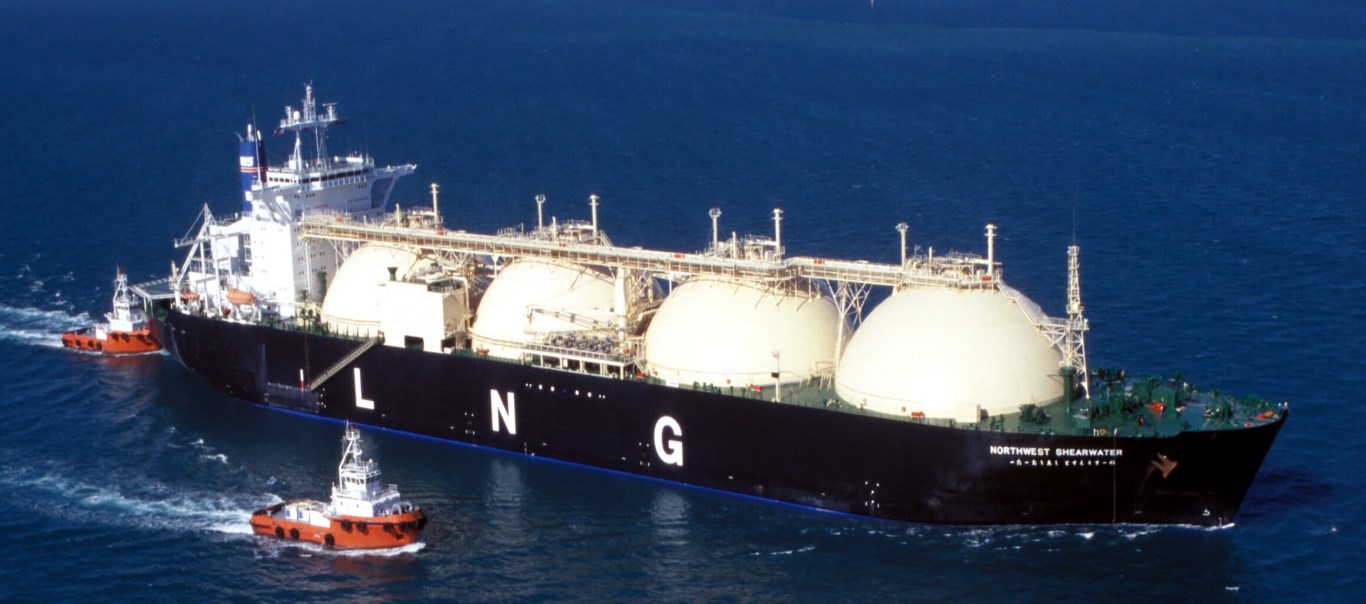Australia is top LNG exporter
December 12, 2018 | Expert Insights

Australia became the biggest exporter of liquefied natural gas (LNG), overtaking the small Arab nation of Qatar, that has over recent years been the world's top producer.
Qatar has seen its LNG exports dip ever since the Saudi-led diplomatic isolation cut off the country from key middle eastern markets.
Background
Liquefied natural gas (LNG) is natural gas (predominantly methane, CH4, with some mixture of ethane C2H6) that has been cooled down to liquid form for ease and safety of non-pressurized storage or transport. It takes up about 1/600th the volume of natural gas in the gaseous state (at standard conditions for temperature and pressure). It is odourless, colourless, non-toxic and non-corrosive.
Natural gas is mainly converted to LNG for transport over the seas where laying pipelines is not feasible technically and economically. LNG achieves a higher reduction in volume than compressed natural gas (CNG)
In November, Australia loaded 6.5 million tonnes of LNG for exports while Qatar exported over 6.2 million tonnes, the data showed.
Analysis
Australia became the world’s leading exporter of LNG, overtaking the increasingly isolated island nation of Qatar. Australia has always been a net exporter of fossil fuel-based products and its recent export numbers highlight the country’s rising importance in Asia-Pacific’s energy supply.
The surge in Australian exports follows the start-up of a number of export projects in the country over the past three years, most recently the Ichthys project offshore its northern coast.
According to the data, Australia shipped out 6.5 million tons of LNG last month against 6.2 million tons exported by the Qatari producers. Australia's LNG exports surged by more than 15 percent compared to the previous month, while volumes of the liquefied fuel shipped by Qatar dropped three percent, marking the first decline in four years.
“It may have come later and at a higher cost than originally envisaged, but Australia has taken the crown,” said Saul Kavonic, an energy analyst at Sydney-based Credit Suisse unit, as quoted by Reuters.
“Qatar, of course, will respond and we expect a new wave of projects to be launched which will see Qatar regain its position as the leading exporter by the early 2020s,” Neil Beveridge, an analyst at Sanford Bernstein, told the agency.
“We are expecting this to be temporary and that Qatar will likely produce 6.5 million tons in December, meaning it will again be the largest exporter,” Wood Mackenzie analyst Nicholas Browne said, citing maintenance as the key reason for the drop in November.
Last week, Qatari Energy Minister Saad al-Kaabi announced that the nation will quit the Organization of the Petroleum Exporting Countries (OPEC) in January 2019. According to al-Kaabi, Qatar, which currently exports around 600,000 barrels per day of crude oil, is planning to focus on developing its natural gas sector.
Qatar is expected to increase its annual LNG output from the current 77 million to 110 million tons as soon as in 2024. To achieve the goal the peninsula state is planning to add a fourth LNG production line.
“The reality is Australia will only keep this title for a few years before Qatar retakes the crown, and in the longer term, it will likely be a US versus Qatar story for [the] top spot with Australia in third place,” according to Credit Suisse’s Kavonic.
Australia’s new project in the pipeline, Royal Dutch Shell’s Prelude, comes online by next year which is projected to retain Australia’s title as the leading LNG exporter. Analysts speculate that though Qatar will not stay idle, Australia is at an advantageous position due to its growing trade volume with India and China.
Qatar plans to boost its LNG capacity by early 2024 to 110 million tonnes a year, up from its current production of 77 million tonnes a year, by adding a fourth LNG production line.
Assessment
Our assessment is that Australia will further cement its top position as the final new project in the pipeline comes online by next year. We believe that Australia’s hold on the top spot could be short as LNG exports are being blamed for rising domestic gas prices, which has become a political issue in the country.








Comments